A Travel to Montreal
Posted on 24 Apr 2022, tagged lifeMontrealCanada
I have been in Toronto for more than two years. However, because of Covid-19, I’ve never travelled outside of Greater Toronto Area except Niagara Falls since I came here. Until a few weeks ago, with the Covid-19 measures mostly lifted, my wife and I decided it’s time to take a trip after such a long time. And the long weekend before Easter day is a perfect time.
The destination we chose was Montreal. It’s very close to Toronto, and is the second largest populated city in Canada. Because of its location at St Lawrence river, the early colonizers stopped at Montreal to create frontier port and fort, which makes it one of the earliest cities in Canada. The French colony history of Montreal produces a culture that is different than other English colonies, and is mostly preserved by Quebec Act after the conquest by the British. This makes it a great destination for travelling, since the main purpose of travelling is to escape from daily life and feel something different.
Airport on Toronto Islands
The flight we booked departed from Billy Bishop airport. This airport is located at Toronto islands – a chain of small islands in Lake Ontario near Downtown Toronto. Considering the close distance between the airport and downtown, jets are banned to limit noise level. As a result, the destinations from this airport are mostly nearby cities in Canada and the US.
Despite the limited flight options, the location of this airport is so convenient that I can walk there in just half an hour from home. I’ve always appreciated the walkable neighborhoods in Downtown Toronto, but I’ve never thought I can just walk to an airport. The airport entrance is located at the lake shore and is connected to the airport with an underground tunnel. Looking back to the water front, the view is just unbeatable.
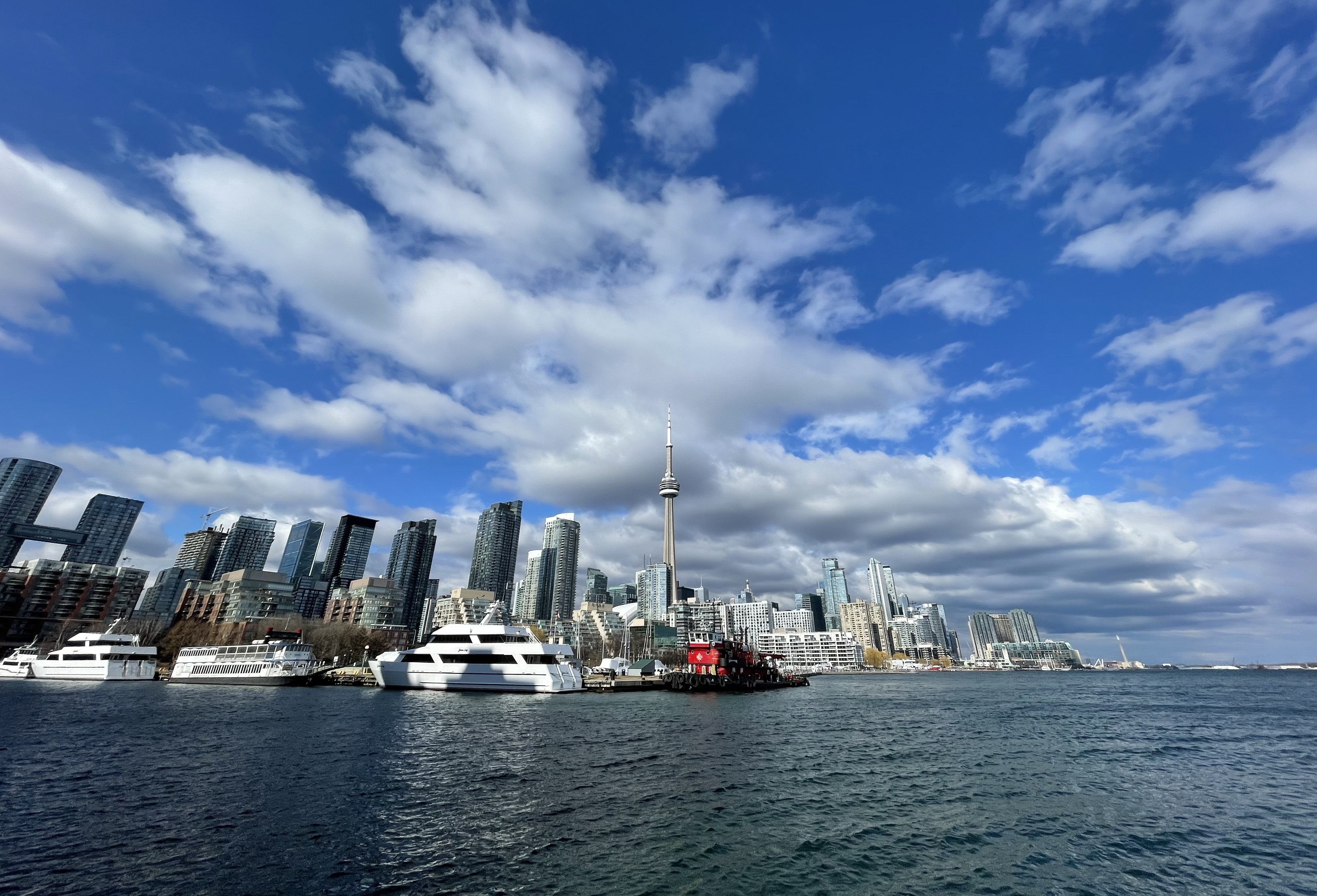
It’s lovely inside the airport as well. The advantage of a small airport is you don’t need to walk a mile from the entrance to the boarding gate. The whole waiting area is like a cafeteria: The seats are arranged in curved lines, lots of them with tables. It’s clean and quiet, really unlike lots of airports I’ve been to.
Old Montreal
We arrived at Montreal at an early evening. The moment we came out from the subway station, we saw the moon was shining and the sky was deep blue. Under the sky was a large building with yellow lighting on the top. There was a curved road near the building. Farther away along the road, there seems to be a gigantic European style gate with complex stone decoration – only at the next day we found out it’s actually the facade of the famous Notre-Dame Basilica of Montreal, whose beautiful and mysterious dome has the color just like the sky of that night.
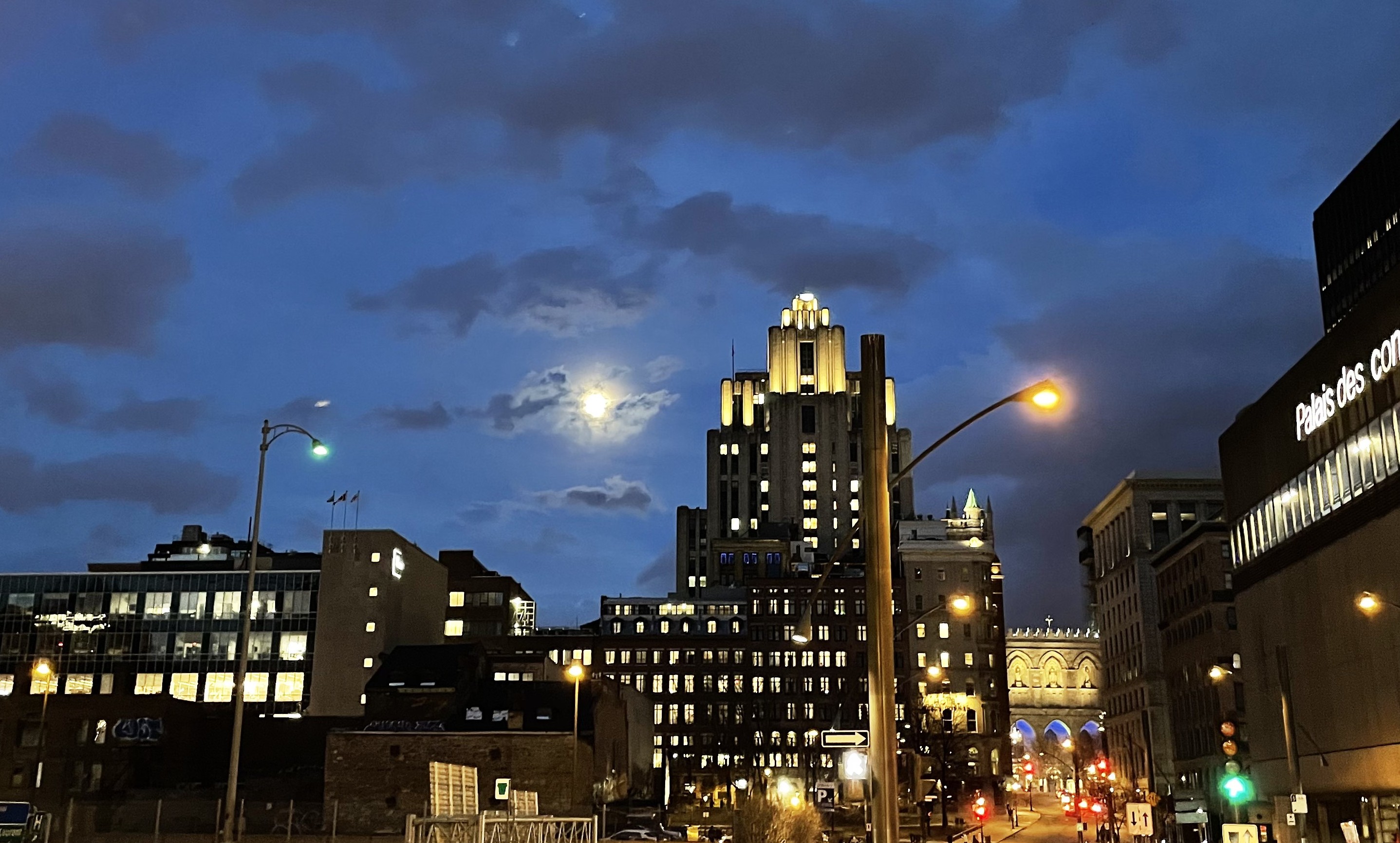
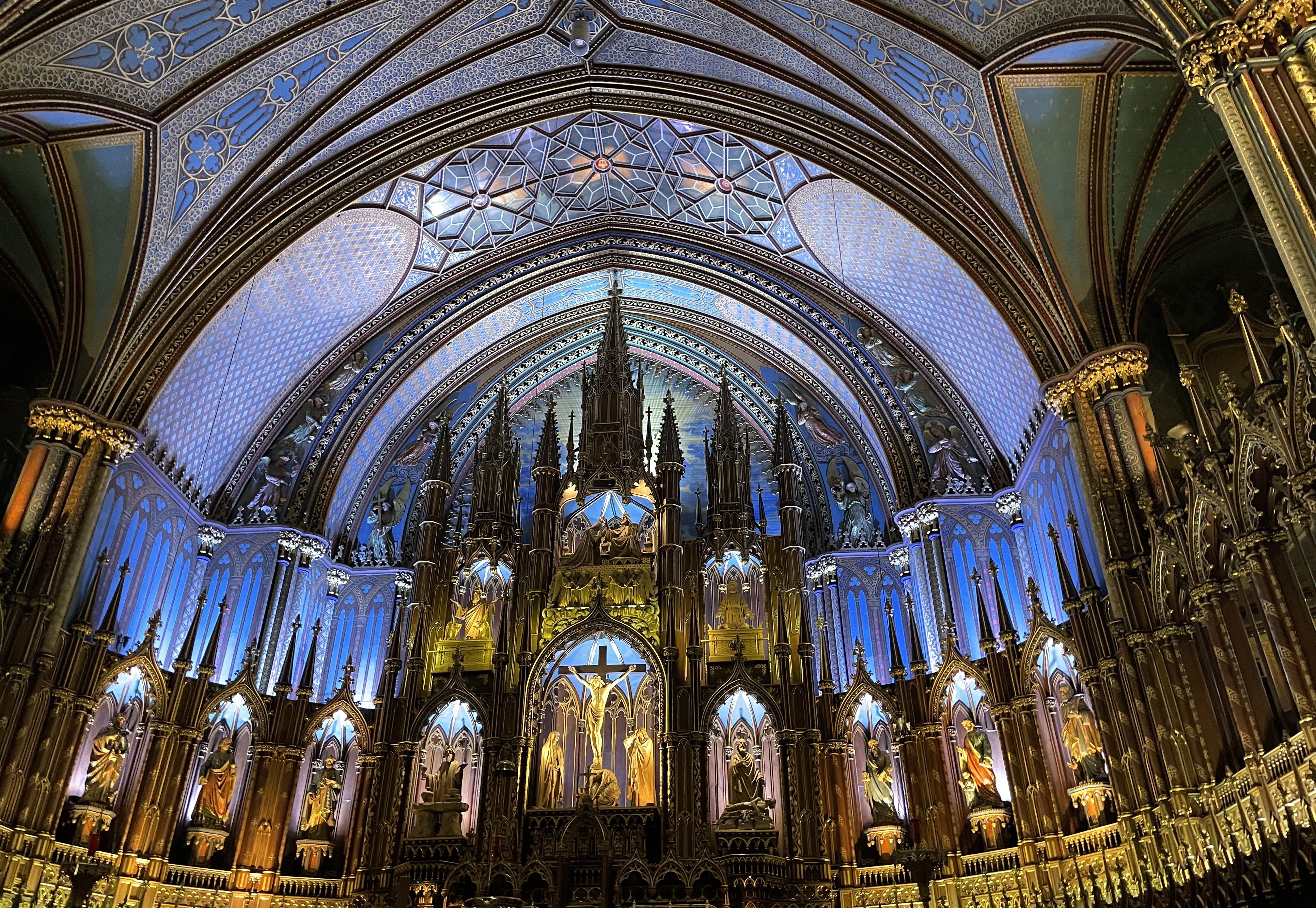
Montreal has lots of beautiful old buildings, especially near St Lawrence river, in the area where the city was first established. This area is called Old Montreal now. It has lots of bars, restaurants, cafes, parks and even a Ferris wheel. It’s a vibrant area filled with people during the weekend. Thanks to some pedestrian only streets, and narrow roads that help to limit the speed of cars, it really feels like an old and classic European city. I hope Toronto has more pedestrian only streets like this.
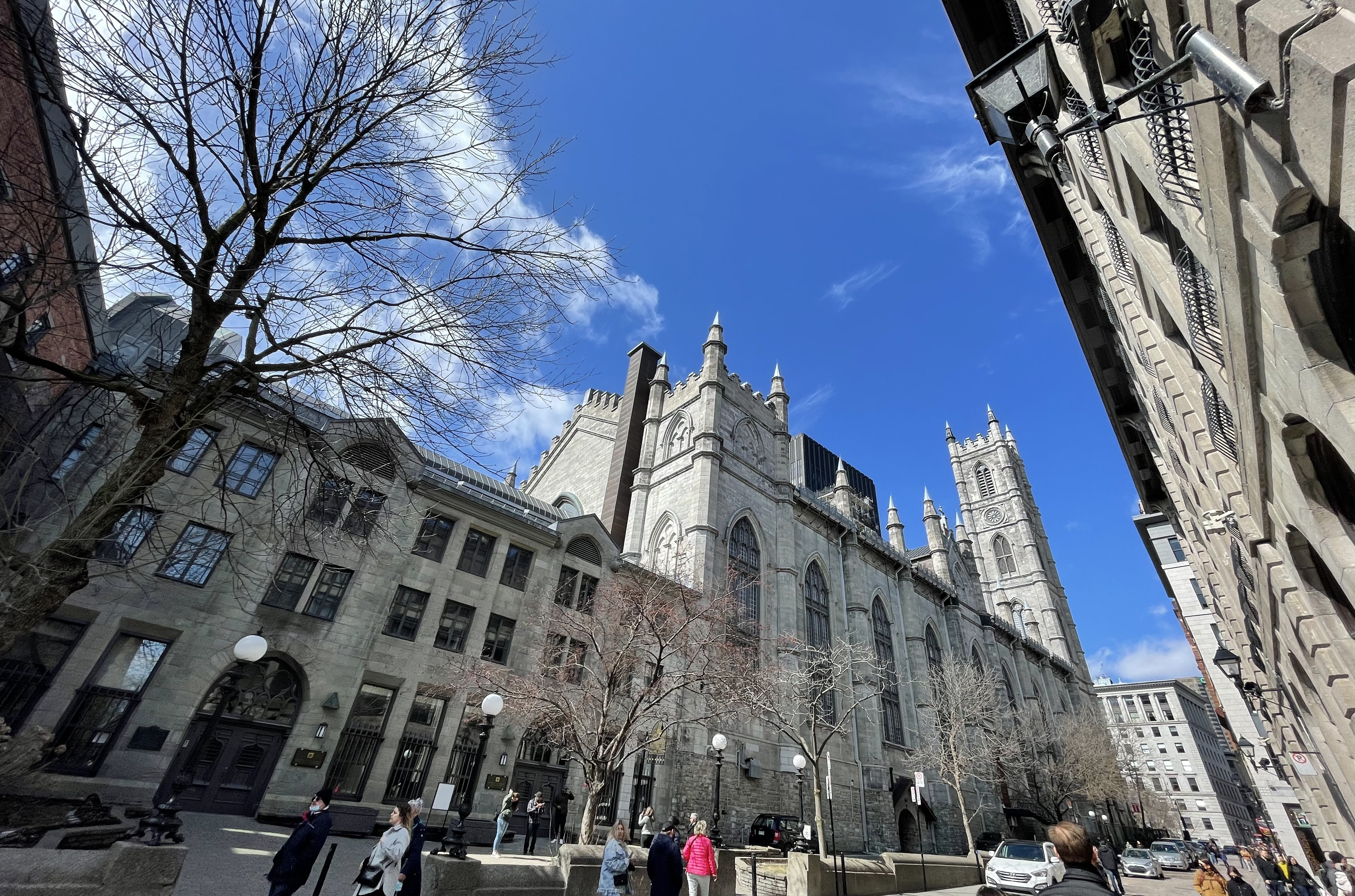
In my opinion, another masterpiece in this area is not one of the old-day buildings. Instead, it’s built from the ashes of old buildings. It’s Pointe-à-Callière, or Montreal Museum of Archaeology and History. Its main building is built on top of the remains of Royal Insurance Building. However, it’s actually much larger than that. A large part of the Museum is underground which connects other smaller aboveground buildings. The underground part covers the remains of multiple historical sites, including the Royal Insurance Building, the old custom house, an old sewer (which is a result of transforming a river to underground), Fort Ville-Marie and so on. The collections of this museum are not the most valuable ones, but combined with this unique site, it presents them in a both beautiful and informative way. The style of exhibit is like an art gallery, and with the help of lights and audio, it shows how history leaves marks in different periods.
What amazed me the most is the ability to find the exact foundation of the city. This is unthinkable in most Chinese cities, and I think for lots of old world cities as well, because of their long history. It’s so valuable for the new world cities to be able to see its whole history, and learn from it.
Downtown Montreal
Old Montreal is beautiful, but I don’t think it would be the first choice if people want to go shopping – it’s mostly souvenir shops over there. In contrast, there are so many shopping malls at Downtown Montreal, especially along Saint-Catherine Street. Across the whole downtown area, this street is filled with restaurants, bars, shops, and of course, people. And again, I think the vibrancy is largely thanks to the wide pedestrian street and narrow roads for cars. I saw some places are still under construction which was probably to make the pedestrian street even wider.
The buildings are nicer and taller than those on Toronto commercial streets. Grand entrance with tall windows on the facade is very usual. Indoor space also feels more open, almost like the shopping malls at suburb areas of Toronto. All of these make it pleasant for walking and shopping.
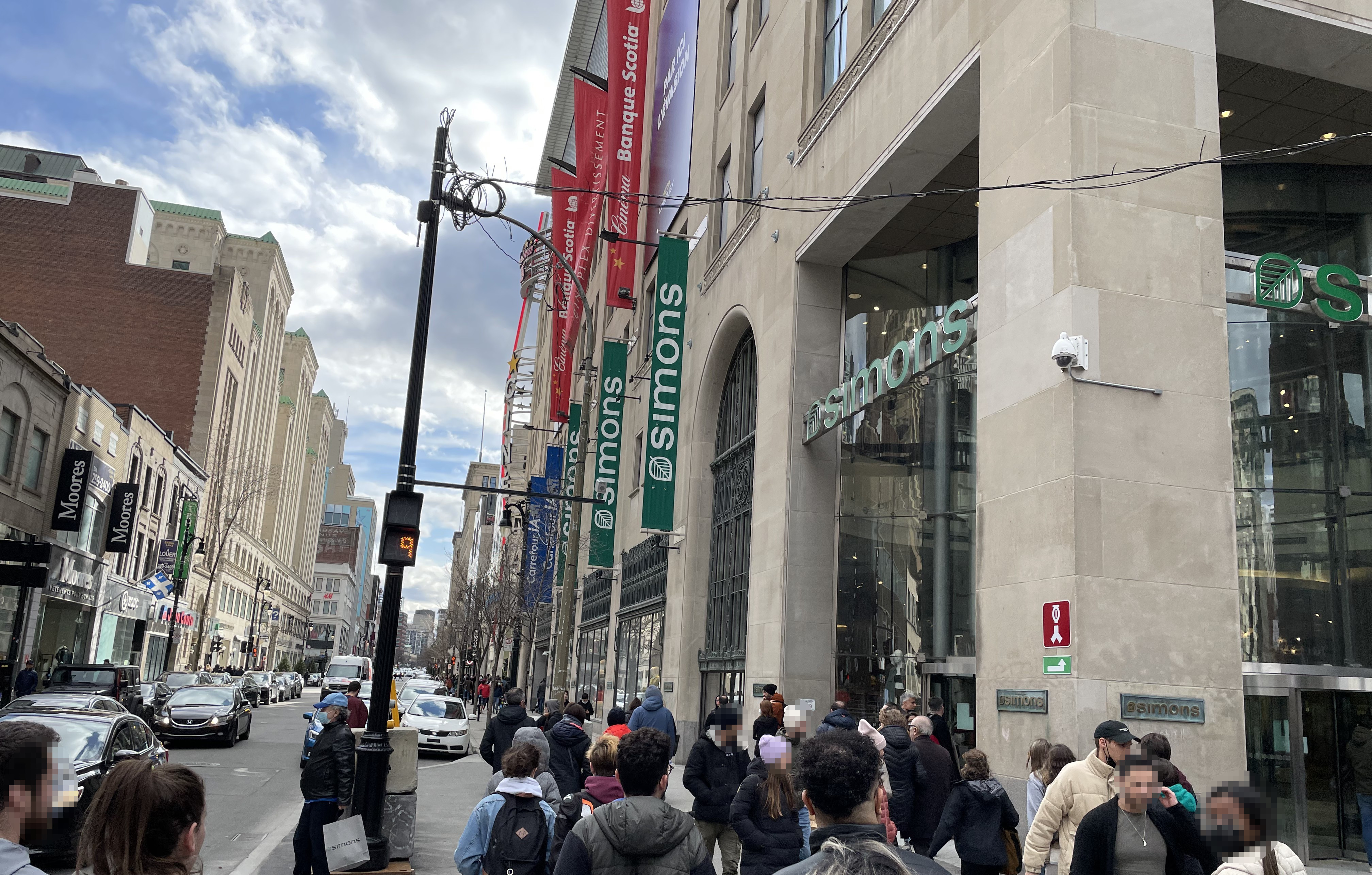
Montreal is a city that speaks French, but also lots of English, more than any other cities in Quebec. This is most obvious in book stores. In an Indigo store I visited, the first floor is filled with French books while the second floor with English books. It’s fun to think about how two different cultures, even both of them are from Europe thus similar from an outsider’s point of view, are mixed and conflicted. Another example of this conflict can be seen from the introduction movie at Pointe-à-Callière: while it spends little time to introduce how French occupied the Island of Montreal from native people (other parts of the Museum did say the Island of Montreal is kind of unoccupied before French came since it’s easier to get attacked because of the geography), it plays scary music during the narrative of British conquer and releases British from a book like a demon. I’m not sure if it’s a joke or not, but you can see something from it.
Speaking of the multicultural of the city, I must mention the Chinatown. It’s located at the eastern part of downtown, with four Paifang – a Chinese style gate – mark the boundaries. St Laurent Street, which is also often called the Main Street, passes right through it. There is another pedestrian only street in Chinatown, which makes this area very vibrant. I even found a restaurant that provides some special food from my hometown. That food is hard to find even in Beijing, and I’ve never seen it in Toronto. So this is a happy surprise we didn’t expect.

Unlike Toronto, the Chinatown in Montreal is marked with clear boundaries, and seems to attract more people (I’ve never been to the other Chinatown at eastern Toronto so not sure about that one). But it seems to be mostly a commercial zone without many residential buildings. And most Chinese businesses seem to be limited to this area – unlike Toronto where you can find them almost everywhere. The next day I walked to another area at western downtown near Concordia University, where I heard newer Chinese immigrants prefer, and found some Chinese restaurants and shops with more modern style. But my overall impression is the Chinese businesses are more centralized than those in Toronto.
Mount Royal, Montreal
Montreal is named after Mount Royal, which I didn’t know before, but makes lots of sense to me after I heard it. It’s not a high mountain, but still high enough to see the whole downtown area and beyond that. I’d like to think it’s the backyard of the city – just next to the commercial and residential area, here is a nice park with wonderful views.
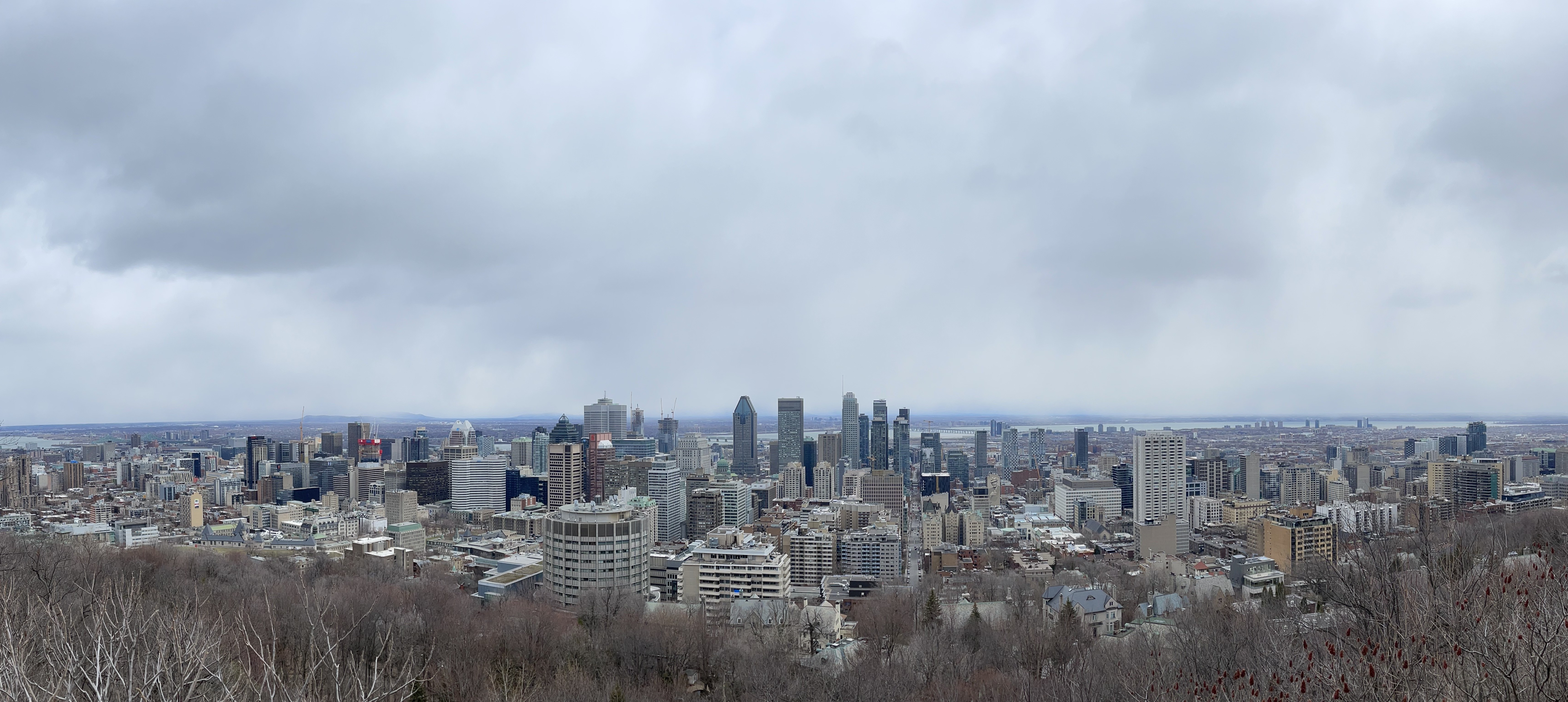
There is another large church called Saint Joseph’s Oratory near Mount Royal. You can see Montreal at another direction from there. The day we visited there was cold, with freezing rain and heavy wind. Sitting inside the church and watching layers of cloud floating, and the land and rivers under it, I couldn’t stop wondering what have happened on this land. When I was in China and stood at a high point like this, I could almost see the past of the land: the dynasties, the legendaries, the glories, the wars and the tragedies. Sometimes I could feel the pain of the land because it bears so many histories. But it’s different here: everything is so calm, nothing much to tell, only the wind, the cloud and maybe some forgotten stories.
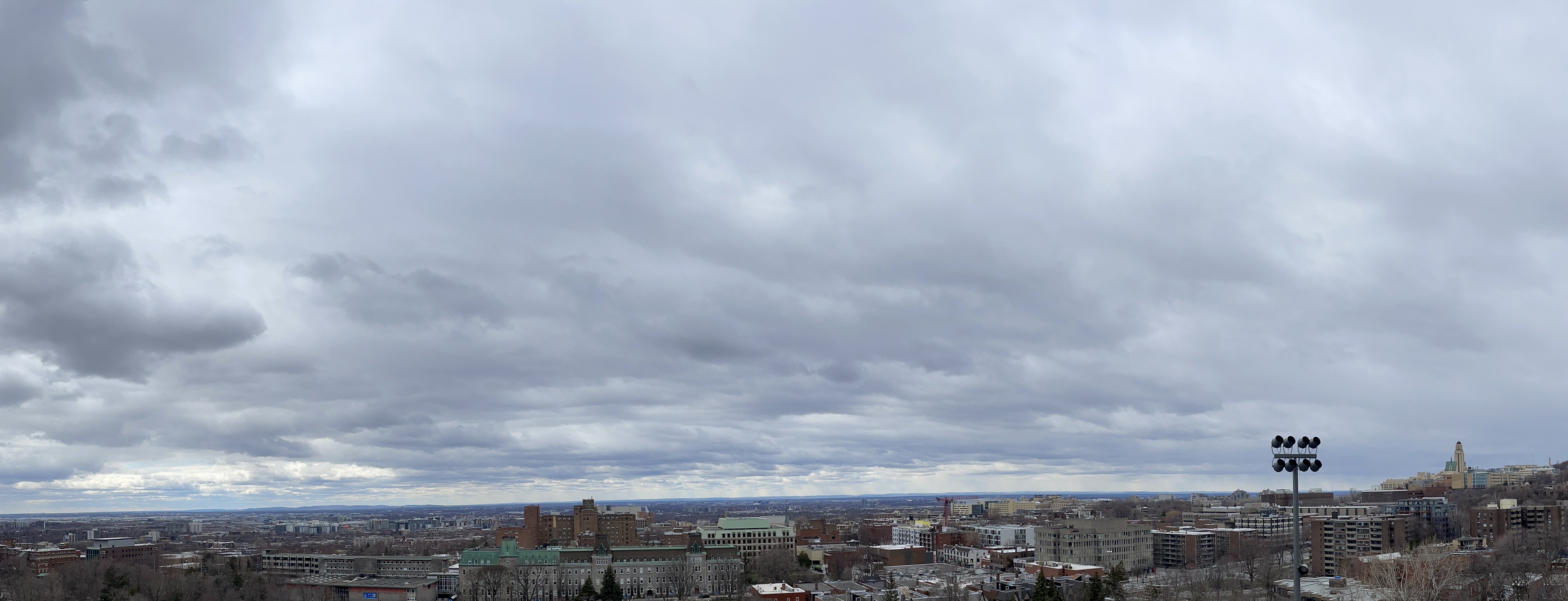
Food, Life
There are some famous foods in Montreal. Poutine, bagel and smoked meat are in the top list. And of course we tried all of them. Poutine is fine, but not much better than the Poutine in Toronto. Smoked meat is very unique, almost like a kind of Chinese stewed beef, but with more delicious fat. However, bagels there were a big disappointment. It’s either we didn’t find the right place, or didn’t eat them in the right way. We looked up a very popular bagel store, waited in a long line only to find out there is no bagel sandwich – just the bagel itself. So we went to another popular bagel store, waited in a long line again and found out the same. Luckily they also sold salmon and cream cheese, so we bought those and ate them in a nearby cafe. But the bagels are so normal – far worse than the bagels sold by the stores near my home at Toronto. The bagels at Toronto are so delicious that they are among my favourite food. I don’t think I will miss them if they are all like what I ate in Montreal.
During the time we bought bagels, we had an opportunity to walk in one of the residential areas – Mile End community. I was only in Montreal for three days and have no data to support me, but my first impression is its mixed usage is not as good as Toronto. I know North America cities have (in my mind) absurd zoning code and Montreal should already be better than lots of them, but I really like the place that you can just walk to everywhere for daily needs: offices, grocery stores, shopping malls, parks and so on. Downtown Montreal has all of them but I didn’t see lots of residential buildings over there. While at the Mile End community I saw lots of residential houses, even mid rises, but not a lot of other things.
Public transit is good in Montreal. The subway cars are new and clean. But buses can be hit or miss – not sure if it’s because of the holiday weekend. The worst experience happened when we were waiting for the bus to the airport. There was a long line and the buses did not come as scheduled. Lots of people needed to find other ways to the airport at last. According to the lady before us in the line, who was born and raised at Montreal, it’s crazy but apparently not the first time – this situation happened to her at one Christmas day as well. We almost decided to take a taxi to airport as well – actually we called an Uber but the bus came at the last minute. Even so, we didn’t make the flight we booked but the airline was kind enough to move us to the next flight, so the end of the travel is not so bad.
Overall the travel was a great experience. It is a good start to get the life back to normal after Covid-19, and a good start of my exploration to the cities in Canada.